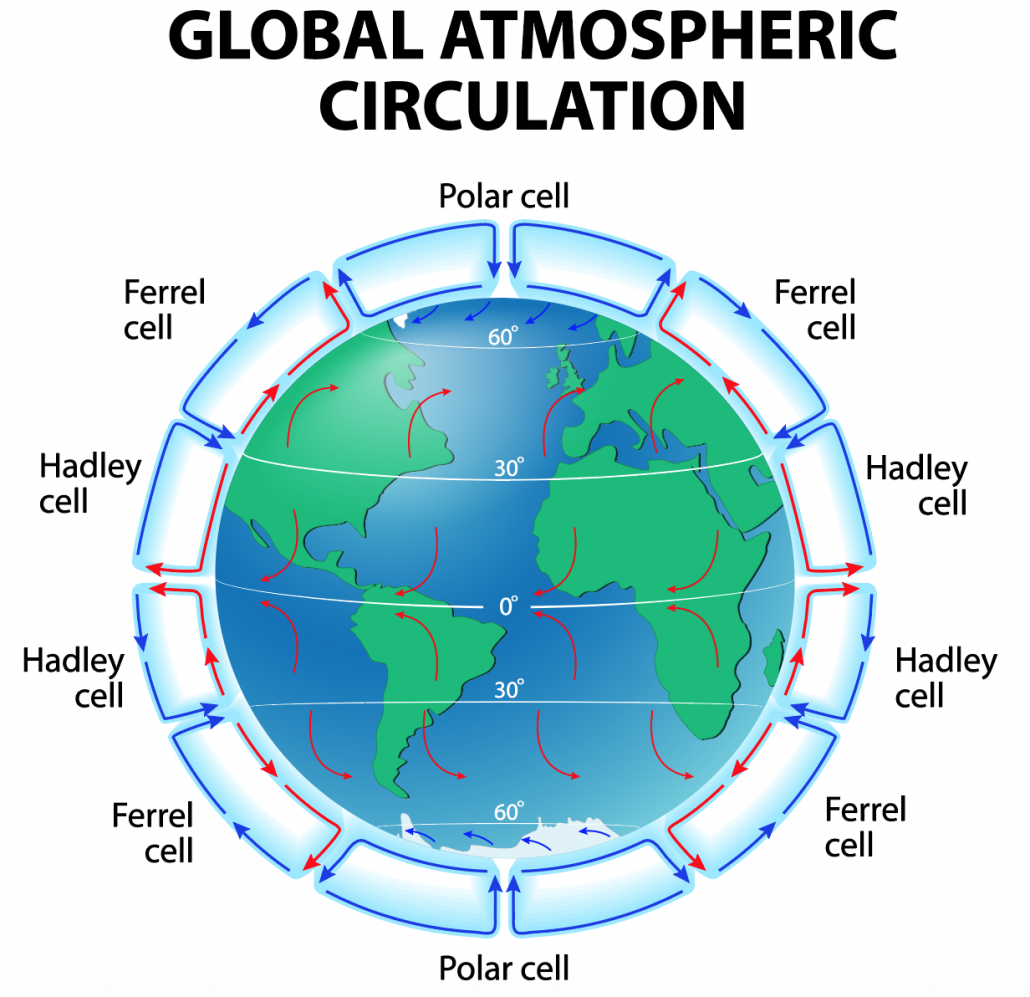What is global atmospheric circulation?
Global Atmospheric Circulation describes how air moves across the planet in a specific pattern.
The Earth is surrounded by a thin layer of air called the atmosphere. The air in the atmosphere moves in response to differences in temperature at the equator (warm) and the poles (cold). This movement of air is called global atmospheric circulation.

Global atmospheric circulation model
Temperatures at the equator are high because incoming solar radiation is more intense as the sun’s energy is more concentrated. Due to high temperatures at the equator, the air rises into the atmosphere. This creates low pressure (as the air rises, it puts less pressure on the Earth’s surface). As the air rises, it becomes colder, causing condensation (forming clouds) that leads to rainfall. This is why tropical rainforests are found along the equator!
When the air reaches the top of the atmosphere, it needs somewhere to go. Some of the air travels north and some south of the equator. The air cools and then sinks around 30° north and south of the equator. As the air sinks, this creates high pressure. As moisture in the sinking air fell at the equator, it is dry, so few clouds form here. This is why deserts are found along 30° north and south of the equator.
The air movement between the equator and 30° north and south is known as the Hadley Cell. Air rises at around 60° north and south and descends at around 90° north and south, forming the Ferrel and Polar Cell.
Global atmospheric circulation creates winds across the planet as air moves from areas of high pressure to areas of low pressure. It also leads to areas of high rainfall, like tropical rainforests, and areas of dry air, like deserts.
In addition to heat from the equator moving towards the poles through atmospheric circulation, ocean currents also transfer heat. Oceans transfer approximately 20 per cent of the total heat from the tropics to the poles. Each ocean has a circular pattern of surface currents called a gyre. They are produced as areas of water moving from one climate zone to another. They are created by surface winds generated by global atmospheric circulation.
Use the images below to explore related GeoTopics.